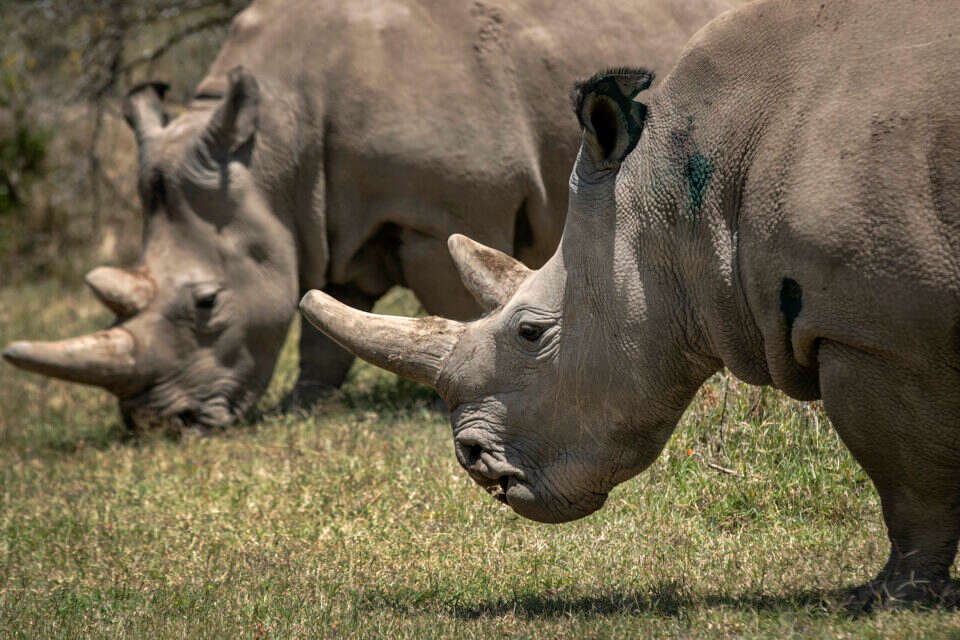Is there hope for the critically endangered northern rhinoceros?
As far as is known, today there are only two individuals of this subspecies in nature, after the last male died in 2018, when he was 45 years old.
Due to their cultural importance and the huge heritage placed on the rhinoceros Nagin and Pato, a mother and daughter living in a Kenyan reserve, they are surrounded by armed forces 24 hours a day, seven days a week.
The scientists had previously hoped to fertilize the two females by the only remaining male, but even before his death he was sickly and weak, so the match could not be arranged.
This reality was the end of the verse for one of the most beautiful and gentle rhinoceros species in the world, which was hunted wildly because of their beautiful horns, but it turns out that there is still real hope to save the species - by using females of the southern wide-lipped rhinoceros subspecies, which are considered close enough to them genetically, as surrogate mothers for the embryos of the northern species.
The last ones from Minan.
Nagin and Pato, photo: AP.
To generate this hope, a group of scientists from the BioRescue consortium created in vitro fertilization 30 embryos of the northern species, by using the sperm of the dead rhinoceros and the eggs of the last two rhinoceros left of the subspecies, which cannot carry a pregnancy in the womb for various reasons, and therefore it was not possible Fertilize them with the sperm of the dead male that has been frozen.
Attempted in vitro fertilization had never been tried in rhinos, and it was not at all certain that it would be successful.
Therefore, it was decided first to try to fertilize a 13-year-old southern rhinoceros named Cora with a southern wide-lipped rhinoceros fetus created by artificial insemination, to see what the result of the fertilization would be.
Unfortunately, Cora died in November from a bacteria that attacked her.
In the autopsy performed on her after her death, it became clear that she was pregnant by one of the two experimental embryos implanted in her uterus, which, as mentioned, did not survive.
"This is a huge breakthrough," said project coordinator Jan Styskal.
"The purpose of the experiment was to test whether we can implant in the womb of a rhinoceros an embryo created in the laboratory. Now, after it has been proven that the process works, we will implant fertilized embryos of the northern variety into the wombs of rhinoceros."
He added that candidates for such in vitro fertilization will be found in the next three months, in the hope that after the 16-month pregnancy, the first offspring of the northern species will return to nature.
The fetus that developed in the dead surrogate rhinoceros, photo: AP.
"extraordinary commitment"
Just as human fertilized embryos can be frozen, so can rhinoceroses, but the scientists decided not to wait with the embryos, so that the offspring that will be born can learn from Najin and Mapato the unique and delicate social behavior of the species.
The experts involved in saving the species point out that they feel a great responsibility to save it, and this is the reason why various public and private entities from around the world helped finance the project, whose cost is several million dollars.
"The level of commitment of all the parties involved in the process is extraordinary, I have never seen anything like this in any project I have taken part in before," Stiskal added.
If the project is successful, it could lead to the opening of a real door to save additional rhinoceros species that are in immediate danger of extinction: Sumatran rhinos and Javan rhinos.
"Extraordinary Commitment".
The scientists with the fetus, photo: AP.
were we wrong
We will fix it!
If you found an error in the article, we would appreciate it if you shared it with us

